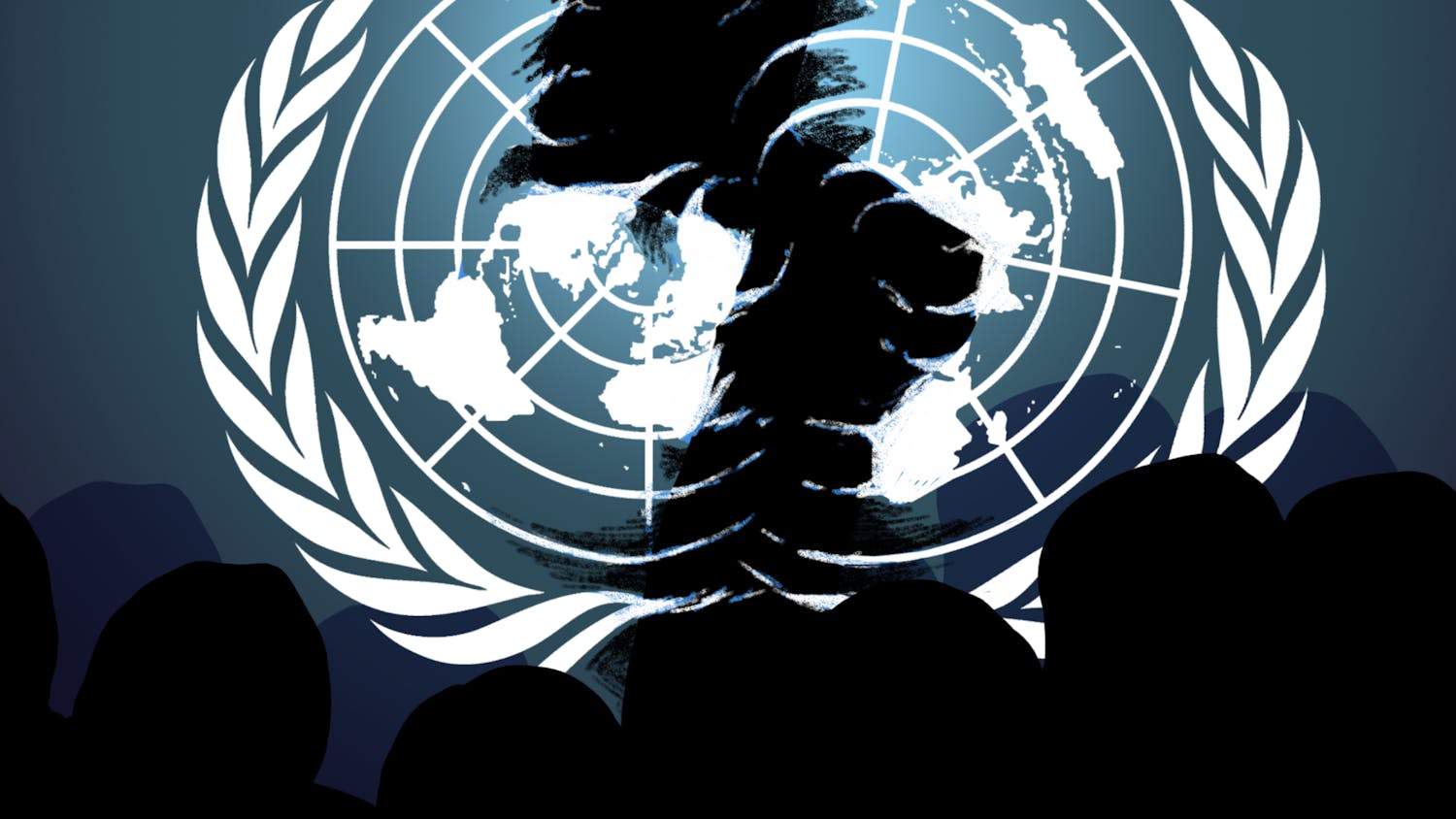Let’s say you want to be a good person. You figure that across your life, you want to donate roughly 10% of your time, money, or other resources explicitly to helping other people and doing good for the world.
You do this through a variety of methods — while you’re a student, you volunteer at a local soup kitchen. As a young adult, you petition your boss at your office to increase the sustainability of your work environment. And as you grow older, you contribute some money to charities that you believe are making a difference: the local parks, climate action groups and perhaps that soup kitchen you helped at when you were still a teen. Remember that?
Odds are, this roughly describes your history and future plans to fulfill your goal of being a good person. Moving forward this likely would make you a good person, or at least better than the average American who donates somewhere between 2% and 5% of their income — as well as some of their time and other resources.
But imagine being able to do the same amount of good while expending about 1/100th of the time, money or resources you otherwise would have. That thought is the driving force behind the movement of “Effective Altruism” (EA) — the desire to best use our limited resources to help the most people.
Effective Altruists think that we should spend time learning how to do good in the most effective ways. Evidence has shown statistically significant inequalities in charities' abilities to reach their missions — saving lives, curing diseases, etc. These inequalities are possible due to massive disparities between people and between nations and the current neglectedness of many life-saving interventions. Essentially, some nonprofits are better at invoking change than others.
This ultimately begs the question — If you're going to do good, why do good bad?
In order to best explain EA, I have outlined some of the most important questions and points below. My aim is to offer some useful knowledge that people across the movement have spent years collecting.
Is it wrong to take a rational approach to altruism?
This is a good question, and one that really depends on how you define rationalism. It is commonly said that rational thoughts are fundamentally opposed to emotions — the head vs. the heart. Looking at it this way, it seems as though there is no room for rationalism when considering something like altruism, which is driven by emotion.
However, I prefer to see rational thought patterns as those that enable us to follow our goals and act on our emotional desires intelligently and with purpose, setting us apart from other animals. No one is arguing that you should give up your modern technologies because they were brought about with rationality rather than emotivity. In the same way, you would not want to neglect to offer help rationally in the most effective ways that you could when people’s lives are at stake.
Using your head when you try to do good doesn’t take away your smile or the warm glow of altruism — it usually only makes it stronger.
How can we possibly know what is effective?
There is a famous example of charities providing bug nets to developing countries to help reduce childhood malaria fatalities. However, when a survey was conducted to check on the actual effectiveness of the nets, it was found that many of them were being used as fishing nets rather than for their intended purpose, at the expense of environmental damage to the local area.
Providing nets in this way appeared to be a valid way to save lives but it was not. Something needed to change — something such as providing instructions on how to properly use the nets, which largely solved this issue.
It is now standard practice for the most effective charities to prove the success of their solution in randomized control trials, surveys of the people being affected, alongside other evidence all gathered independently by people without a vested interest. Prioritizing these sources over charities’ purchases marketing allows for the easy identification of sound charities.
Nonetheless, It can be very hard to locate and learn information about what charities are the most effective — especially when some organizations use the flawed technique of rating charities by overhead costs instead of effectiveness. Luckily, most of this work is already done by organizations dedicated to finding the best charities and directing people towards them — see websites such as Open Philanthropy and GiveWell.
In the same way that it would be reasonable to strongly consider medical advice from a doctor, we should also trust professional statisticians and unbiased charity reviewers to know how effective a particular intervention might be — especially when hundreds of lives could hang in the balance.
But shouldn’t we focus on the problems in our own backyards first?
This is also a valid concern — if someone had the choice to save the life of a stranger on the other side of the world or a stranger in their city, most everyone would choose to save the closer person, all else being equal. The trouble is, all else is not equal.
To provide an example: the US Department of Transportation publishes their Valuation of a Statistical Life analysis each year, guiding their decisions on traffic deaths in the United States. For the 2020 year, this figure was $11.6 million. Essentially, if there was a road improvement that would save one life, this US department would fund it if it cost less than $11.6 million.
As outlined by the United States DOT, a life in their country values $11.6 million.
Make no mistake — it is a great thing that this number is so high. But comparing this to the top-recommended charities on GiveWell, which estimate an average cost-effectiveness of around $3,000 per life saved, we can see a rather substantial difference. For every life the United States DOT is willing to save through road improvements, the same amount of money could be used to save over three and a half thousand lives in other countries.
Most people believe that all lives are equal. Given that belief, working on the cheapest problems first makes more sense than the closest, considering that there are lives at stake.
What if we want to direct our altruism towards something we have a personal connection to?
This is true for most people and is a natural instinct that is strongly tied to altruism. Even if someone does feel as though they ought to do the most effective thing, frequently they also feel like if they did, they would become detached and eventually stop doing good entirely. If you know that it is true for yourself, then doing the most good for you would mean continuing to do good in the way you are currently doing it.
But usually this isn’t true when you take the leap and decide to be the sort of person who does effective good. Knowing that your actions are directly responsible for changing situations in which people would otherwise have died, had horrific diseases or remained in crippling poverty, typically brings a greater sense of fulfillment from your actions than doing some lesser good. It is unintuitive to comprehend and feel good about a life saved across the world, but your mind will get used to the idea and usually start feeling just as good about it as you really ought to feel (especially if you have a community to celebrate and praise such actions with you).
It costs about $100 dollars to cure or prevent blindness in the developing world in 2021 — you could do that on a weekly basis with 10% of an average American’s post-graduation income and 10 minutes of time spent to set up a donation.
Entire books can and have been written on the topics of this article. Some are available in text and audio for free. I am well aware that trying to briefly summarize them in a couple of paragraphs is never going to do them justice.
Questions like “does aid breed dependence,” “isn’t this just a drop in the bucket” and “does donating just subsidize billionaires” didn’t quite make the cut for this article, and deserve long, detailed answers in their own right. But the short answer to all these questions is not if we're smart about it.
However, lack of time to read in-depth about these issues is no reason to neglect to do something small to aid them. So if you are a student, I won’t ask you to do anything except consider formalizing your intentions to do good effectively post-graduation. If you do have time right now, consider effective volunteering. Donate blood or platelets. Or perhaps even better, donate plasma to companies that pay you to do so and donate that money to effective charities.
And if you have only a scattered moment here and there, try to use it to build a culture of effective giving and compassion that extends beyond what the eye can see. Every single person is capable of doing a ridiculous amount of good with a small amount of their effort. Please, join other effective altruists like myself in doing so.
—
Can’t believe it’s that easy? I wouldn’t blame you for being skeptical. So please, consider learning more if you are not convinced.
Declan Dally is a junior studying English Linguistics, and a leading member of Effective Altruism UW-Madison. What are your thoughts on doing good in a more effective manner? Send all comments to opinion@dailycardinal.com.






